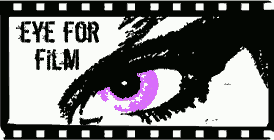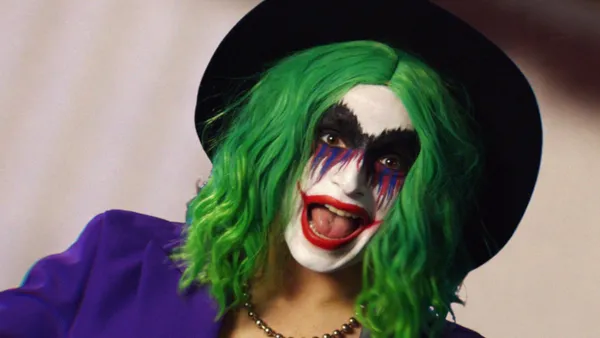 |
| Vera Drew as Joker the Harlequin in The People's Joker. Photo: courtesy of Matchbox Cine |
In the first part of my interview with writer/director/star Vera Drew about her award-winning breakout hit The People’s Joker, we spoke about the character in whom she found her inspiration, the queerness to be found in Gotham City and the need for trans characters who are people first and role models second, if at all. Here we move on to discuss different aspects of this very personal film.
Vera’s character, who comes to be known as Joker the Harlequin, finds a friend and a business partner for her comedy club in Oswald Cobblepot, aka the Penguin (played by Nathan Faustyn). We’d been talking about how the Joker has changed over the decades, and I note that the same is true of the Penguin. We’ve seen more sympathetic portrayals of him in recent years. As a villain, he was always associated with avarice, and now he seems rather tame compared to what's out there, so other aspects of his character are coming through.
She agrees. “It's so interesting because I thought we were ahead of the curve when the idea came of making him like that. The character is really heavily based on Nathan Faustyn, who plays him. Joker and Penguin's friendship in the movie is just me and Nathan. I think it's why it works and we have chemistry. Nathan also did not really learn his lines for this movie. We were really just being ourselves in our scenes together.
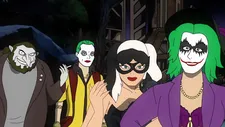 |
| From left to right, Nathan Faustyn as The Penguin, Kane Distler as Mr. J, Daniella Baker as
Catwoman and Vera Drew as Joker the Harlequin, in The People's Joker. Photo: courtesy of Matchbox Cine |
“That was another thing, as we were working on it, just finding out how many schlubby cis guys and then also trans boys were like ‘Penguin’s my gender.’ It's like, ‘Okay, cool.’ I'm glad we found this other archetype because I always just thought of Danny DeVito's Penguin.
“We have this sequence in the movie, at the end, where the animated fight scene and is done in the style of Bruce Timm, like Batman The Animated Series. My animation director for that, when she was drawing our version of the Penguin, her inspiration was Tim Burton's original concept art for the Batman ‘89 Penguin. Because if you look at the original concept art for that, it's just this sad little circus boy, this beautiful little circus boy. And there is this beautiful, sweet innocence to that character.
“I think that is also in a lot of the text of actual canon and history of these characters, but it's only now being unearthed in a way that feels satisfying. I'm glad we made a character in the movie, too, that's a good representation of what a good ally is. There were a lot of beautiful schlubby cis men that showed up for me early in my transition and were just like, ‘What, you're changing your name? Alright, cool. That's fine. Let's smoke some pot.’ That's the kind of vibe, and those are the strongest allies we have a lot of the time. It was fun to show that.”
We talk about the animation in the film. There are lots of different styles. Did she know what she was going to do with it from the start, or was it a case of finding different solutions to the problems that came up when, for instance, she couldn't really do an action sequence the way a blockbuster would have done it?
“I think it was a little bit of both,” she says. “There was kind of a feedback loop of pragmatics and aesthetic choices. I think one of the first ideas I had was I really wanted to do some some sequences in that specific Bruce Timm style, just because I grew up loving the Animated Series. And it's funny because it's the only animated show I remember watching growing up. It definitely wasn't my favourite. From a narrative standpoint, I don't remember loving the show or story. I just loved the aesthetic and the look of it and those versions of the characters. When I picture the Joker, a lot of times I am just picturing that, Bruce Timm Joker, or Harley Quinn, too. And that was a sequence specifically that we were working on for as long as we were working on the movie. Like, we started animating that one pretty early on, and we were animating it up right up until the first première.
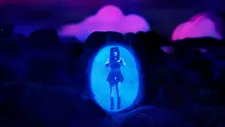 |
| Vera Drew as Joker the Harlequin in The People's Joker Photo: courtesy of Matchbox Cine |
“I knew that the movie was going to be mixed media, and I think that came out of just the people that I assembled to work on it with me. There were just so many different artists from so many different disciplines, and I saw this opportunity to collaborate with people in a way where I didn't have to really micromanage the aesthetic. It was like, ‘What's your skill set? What medium do you work in? I'll find a way to fit it into our collage that we're building.’
“There were pragmatic things, like I had no idea what we were going to do for the Batmobile. I think my initial ideas were to do miniatures or find some toys or something, but I had to be very specific when I was drawing specific IP things. I couldn't just go to Toys-R-Us and buy a Batmobile. But I had this artist, Salem Hughes, who made these beautiful low-poly 3D models. And I was like, ‘Well, what if it just looks like a video game?’ We made the Batmobile and the Batcave look like this late Nineties, early 2000s PlayStation game or something. That made sense for the artificiality of who Batman actually is, both in the movie and as a cultural monolith.
“There's also this sequence in the middle of the movie – it's probably my favourite part in the movie, but I can't really watch it anymore because it's one of the more...” She hesitates. “I mean, the whole movie's very autobiographical and kind of had to be, to justify its existence in and of itself. But there's this whole sequence, like an animated lust scene between these two Jokers. That was a sequence that was originally scripted as live action, but as I was like writing it, it just kept getting more and more personal and vulnerable. I was like, ‘I don't want to be on set shooting this. I don't think I'll feel great acting and directing in this sequence at the same time.’ And there was also something that felt almost more vulnerable and sweet about just turning it into this 2D hand-drawn animated sequence. I had never seen a sequence with that much heart and tenderness done in that style, and there was something about that that almost felt more brave and daring and interesting for that particular moment in the movie.” She shrugs. “I guess there were many things like that throughout the course of working on it where it was just going back and forth between pragmatic and my obsessive art freak ideas.”
Now there’s a short film, The Wedding Of Vera Drew And The Joker. Naturally I feel obliged to enquire about it.
“The Wedding Of Vera Drew And The Joker actually was made shortly after the theatrical run,” she says. “That was entirely pragmatic, just because I was tired of putting on Joker make-up. I wanted to shoot a short film that we would show before our first virtual release. I had been putting on Joker make-up every weekend for a month, and my face was just literally peeling off. I destroyed my face from this movie and had to really put on skincare, but I also needed to write this thing that was specific Joker content.
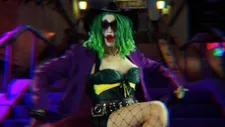 |
| Vera Drew as Joker the Harlequin in The People's Joker Photo: courtesy of Matchbox Cine |
“I think what I really wanted to do with it was also just process what it felt like. putting a movie out there that was as vulnerable and honest as this, but also fuzzy and ridiculous. Because I had done so much press. I had lost count how many times I had been asked questions about my mom or when I came out of the closet. It just felt like I needed to make something that was about almost selling my soul to the Devil this way. Me marrying the joker felt like a useful metaphor for that, because that's kind of what it felt like.
“The film that I shot is technically lost media. We only screened it once and it constantly leaks all the time, which is a lot of fun. It's something I might screen again someday, but I like just having it. Sometimes you just need to make something and throw it away. I think more than anything, it was a ritual of self care, marrying the Joker.”
The People’s Joker is in UK cinemas now.
